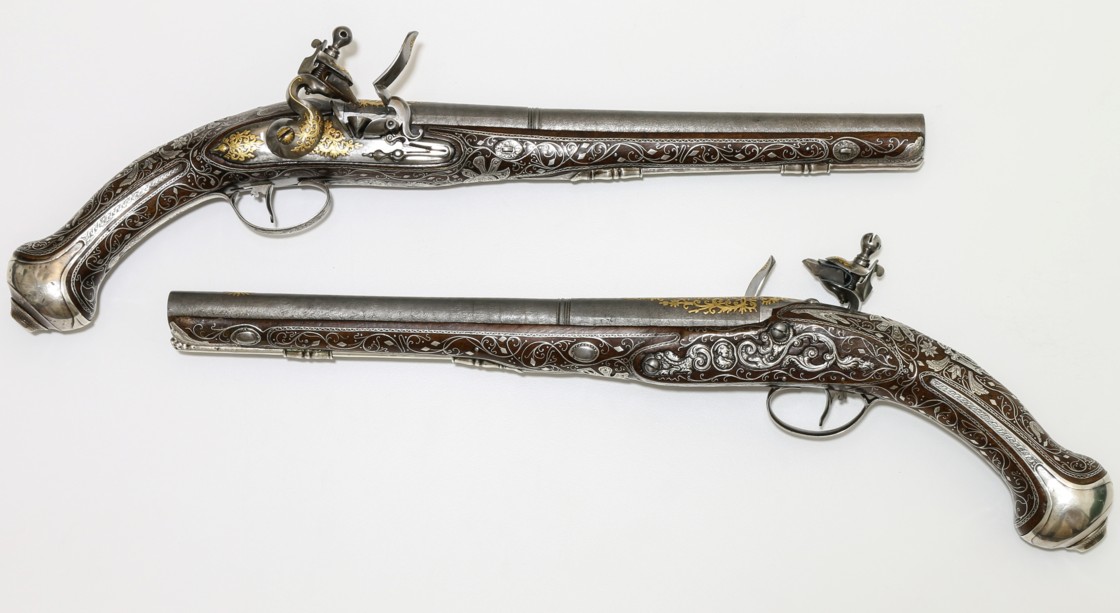
Firearms of the Islamic World
during the Ottoman Period
Firstly, apologies to Dr. Robert Elgood for creating a firearms category out of the titles of two of his excellent books – Firearms of the Islamic World and The Arms of Greece and Her Balkan Neighbours in the Ottoman Period.
At one time, firearms from the Ottoman Empire were considered inferior to European firearms and commanded very low prices. This reputation as a generality was totally unjust. There were gunmakers and silversmiths working in Istanbul, Sarajevo, Prizren and elsewhere in the region who were equal and better craftsmen than many in Europe.
The fine Damascus barrels of some of these guns are breathtakingly beautiful and unequalled anywhere.
Sadly, many of these indigenous Muslim craftsmen were illiterate and did not sign their work. This is a shame, both for the forgotten craftsmen and for collectors who would be able to seek out their favourite gunsmith.
To make matters worse, some of these gunsmiths would attempt to copy European signatures or forge proof-marks to make their guns more attractive to their local clients who coveted European guns. Unfortunately, the result was that much of their work ended up being embossed with gobbledygook pseudo-Islamic characters which was their failed attempt at an imitation of a European signature.
It is true that some of these gunmakers were unskilled and produced seriously crude firearms that have not stood the test of time. Their guns were not desired or sought after at the time and seriously damaged the desirability of all Islamic firearms for a hundred years or so.
However, the two exquisite pistols below from my collection, are testament to the consummate and unparalleled skill of one of the true craftsmen of the period
US expert on oriental firearms, Michael Zomba, summed this up perfectly in his response to my questions when researching my pistols – it is reproduced with permission.
The Damascus barrels are extraordinarily
complex and superb of a quality rarely if ever found on barrels of French make
which are invariably far more defined and coarser if you will. Many French
makers including Nicholas Noel Boutet, Jean LePage, and most prolifically Louis
LaMotte made highly decorated flintlock pistols with raised relief silver-gilt
mounts for the Ottoman or Eastern trade as well as for diplomatic or commercial
presentation. These are nearly always signed by the maker, usually without a
rammer, in the eastern style but lack the magnificent Damascus barrels of the
authentic Turkish pistols. In addition, the elaborate thick trellis silver inlay
appears exclusively on the genuine Ottoman pistols, the French made examples
having silver wire and stars but not the wide all encompassing lacework found on
your pistols and others. There were superb gunmakers working in Istanbul
throughout the latter half of the 18th and into the first half of the 19th
century. The Ottoman attempt to engrave the Spanish Order of The Golden Fleece
or some other noble or royal order on the thumb pieces is further evidence of
their Ottoman make.

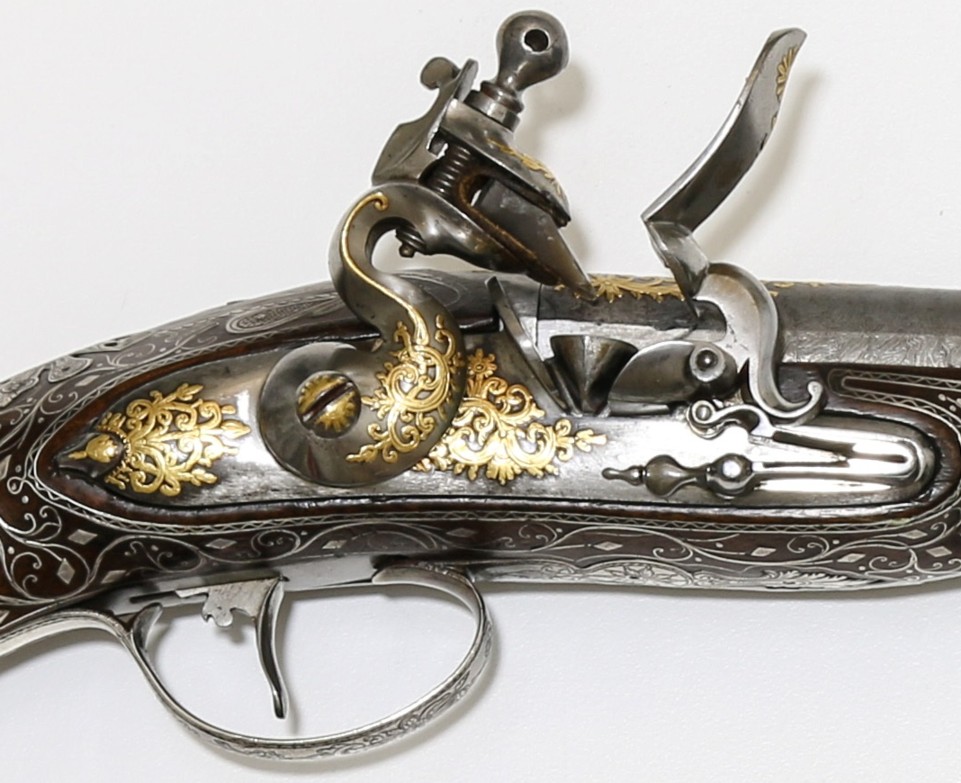
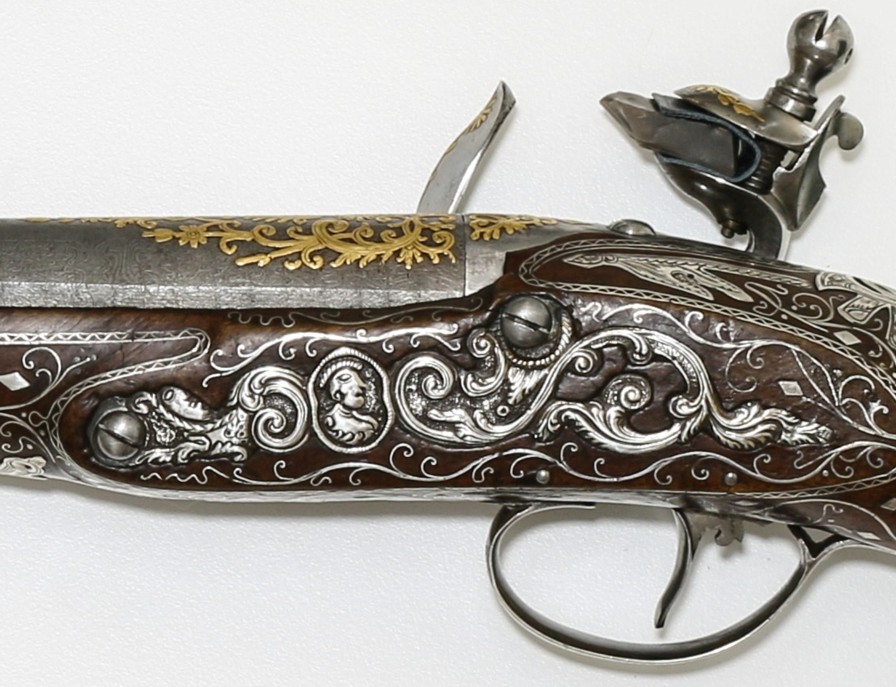
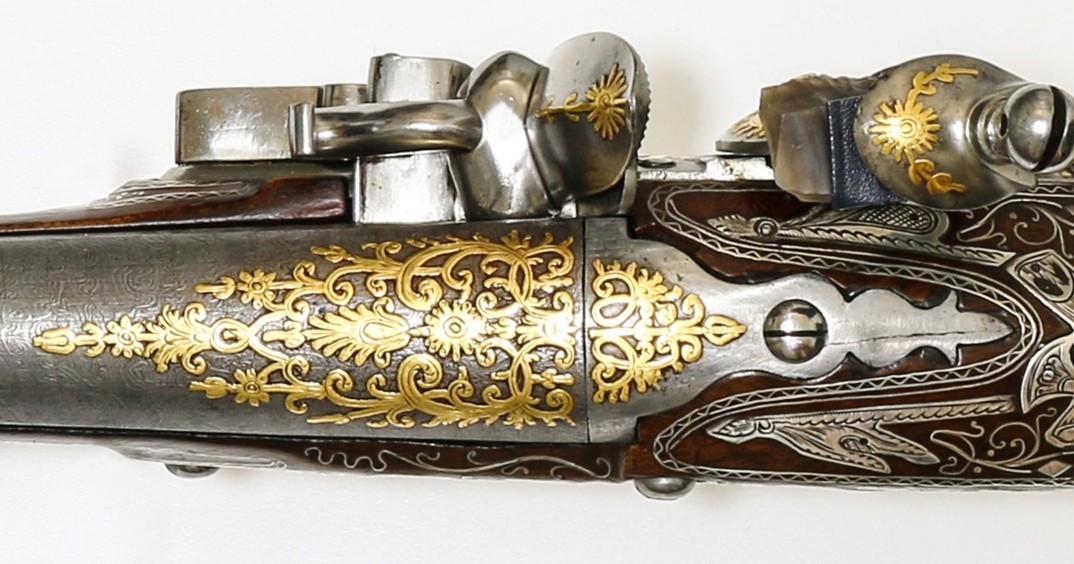
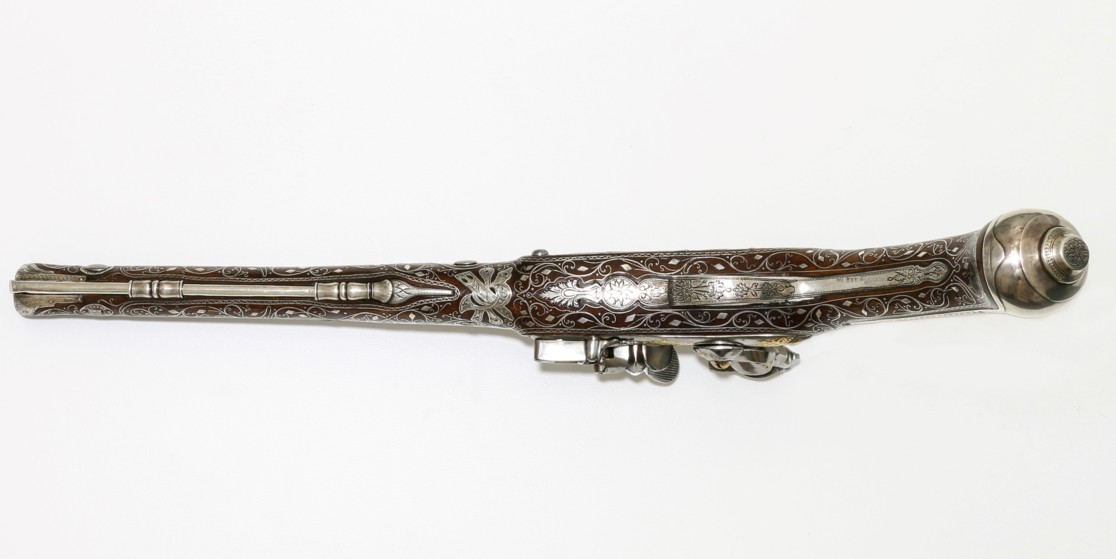
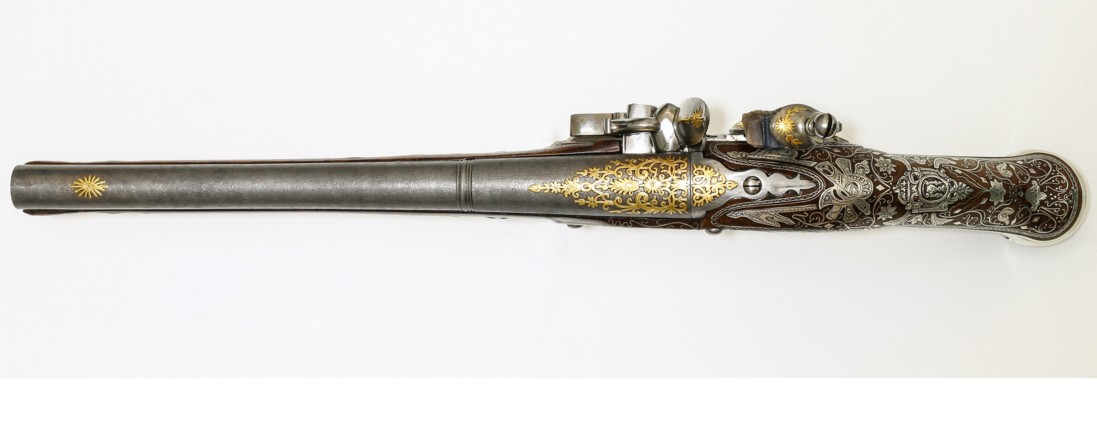

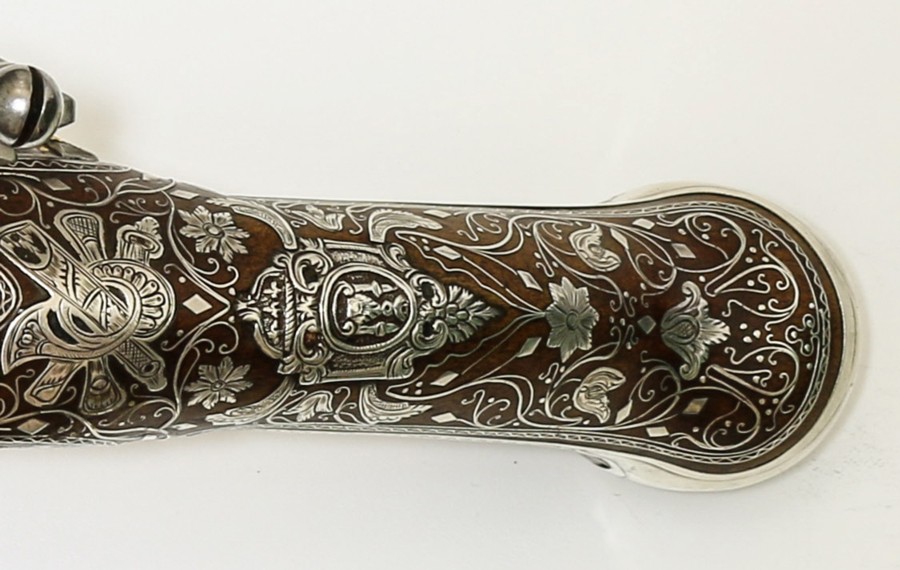
Dr. Robert Elgood, mentioned above has also been very generous with his time and knowledge and helped me understand more about Islamic gunmakers and more particularly my own pistols.
He has pointed out that the previous dating of my pistols at circa 1760 is unlikely to be correct because the pistols carry rainproof pans that date them early to mid-nineteenth century.
So, whilst these firearms don’t possess the snob value of a Manton, Boutet, Le Page or Mariette, they are worthy of their place in history as very fine firearms in their own right.
Michael Barnett
Perth
Western Australia